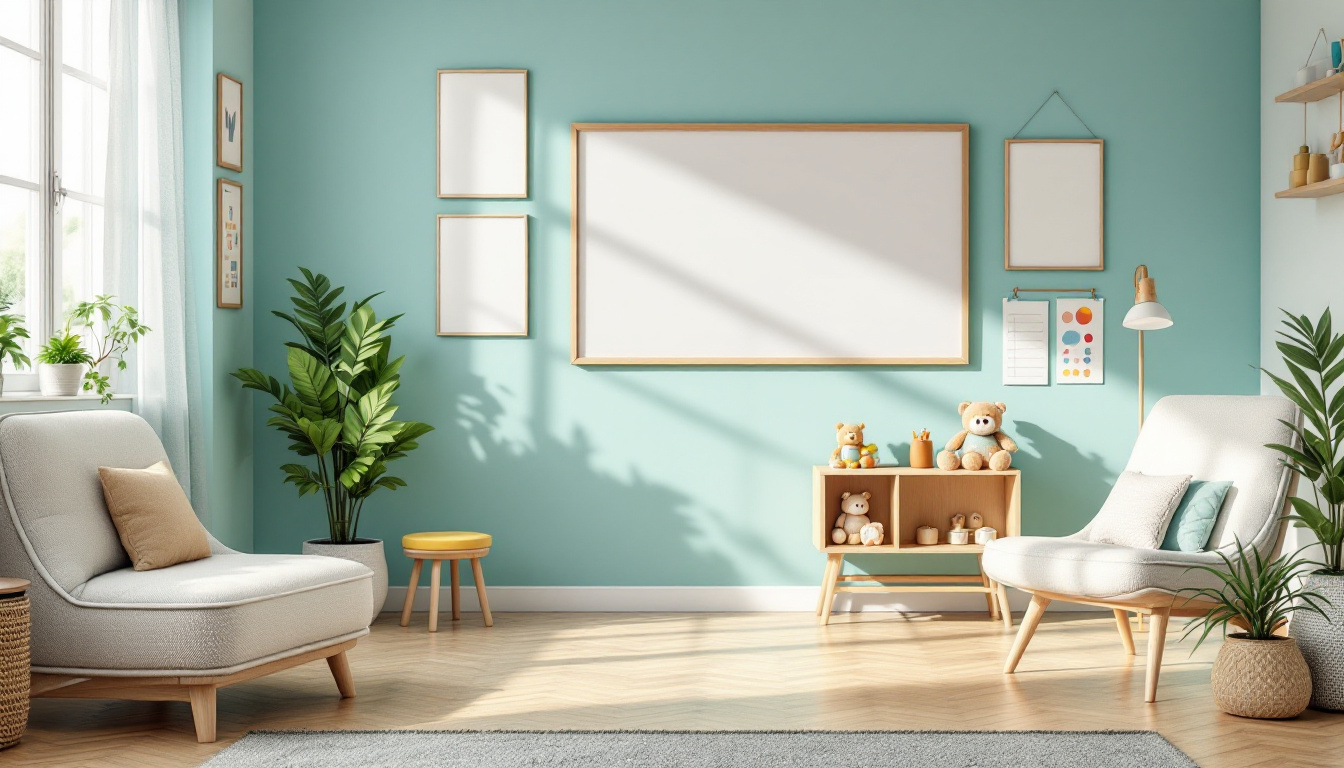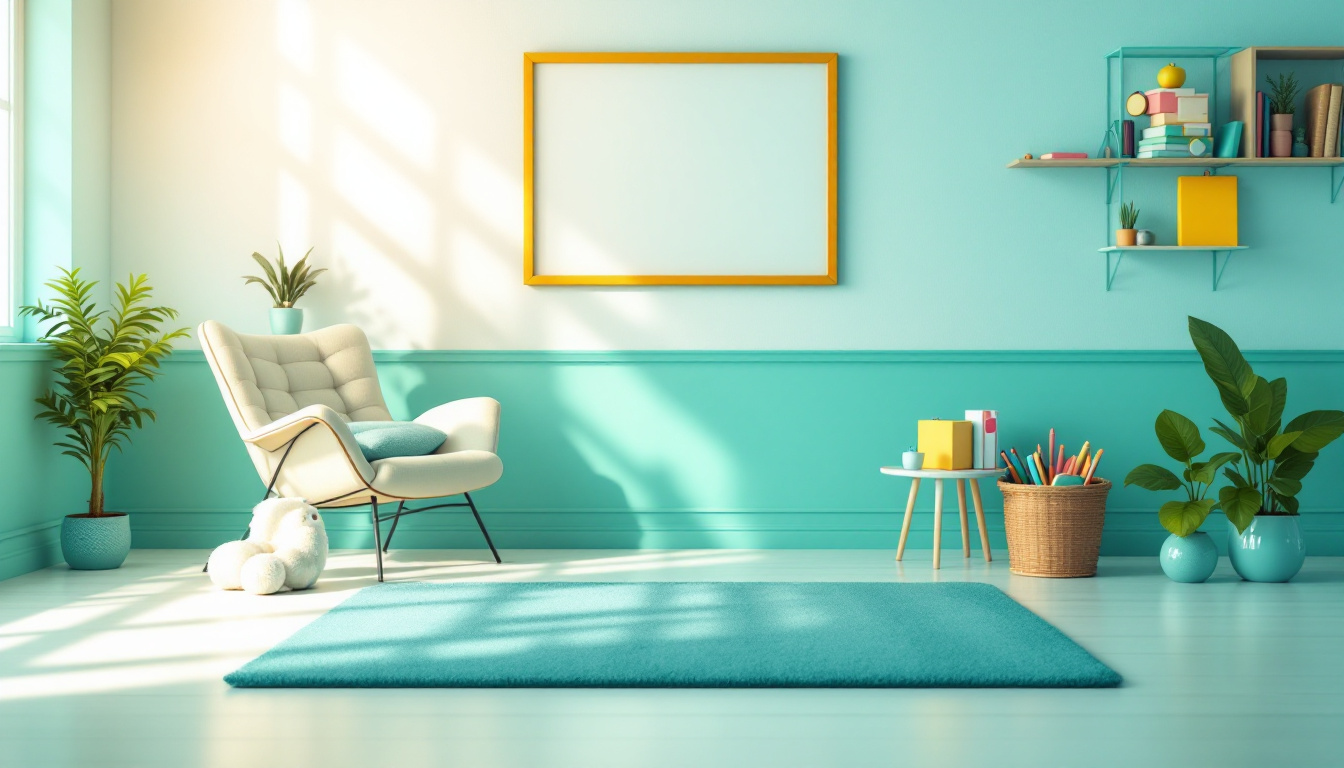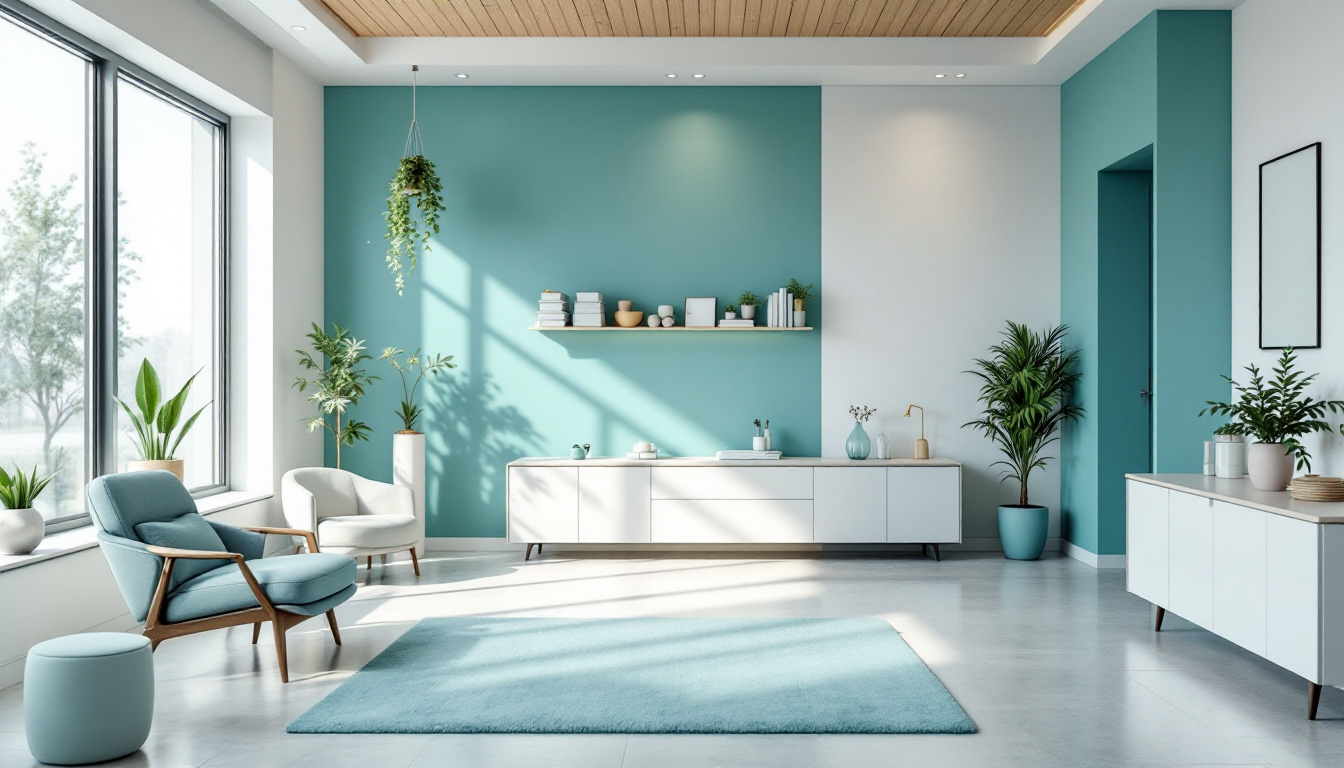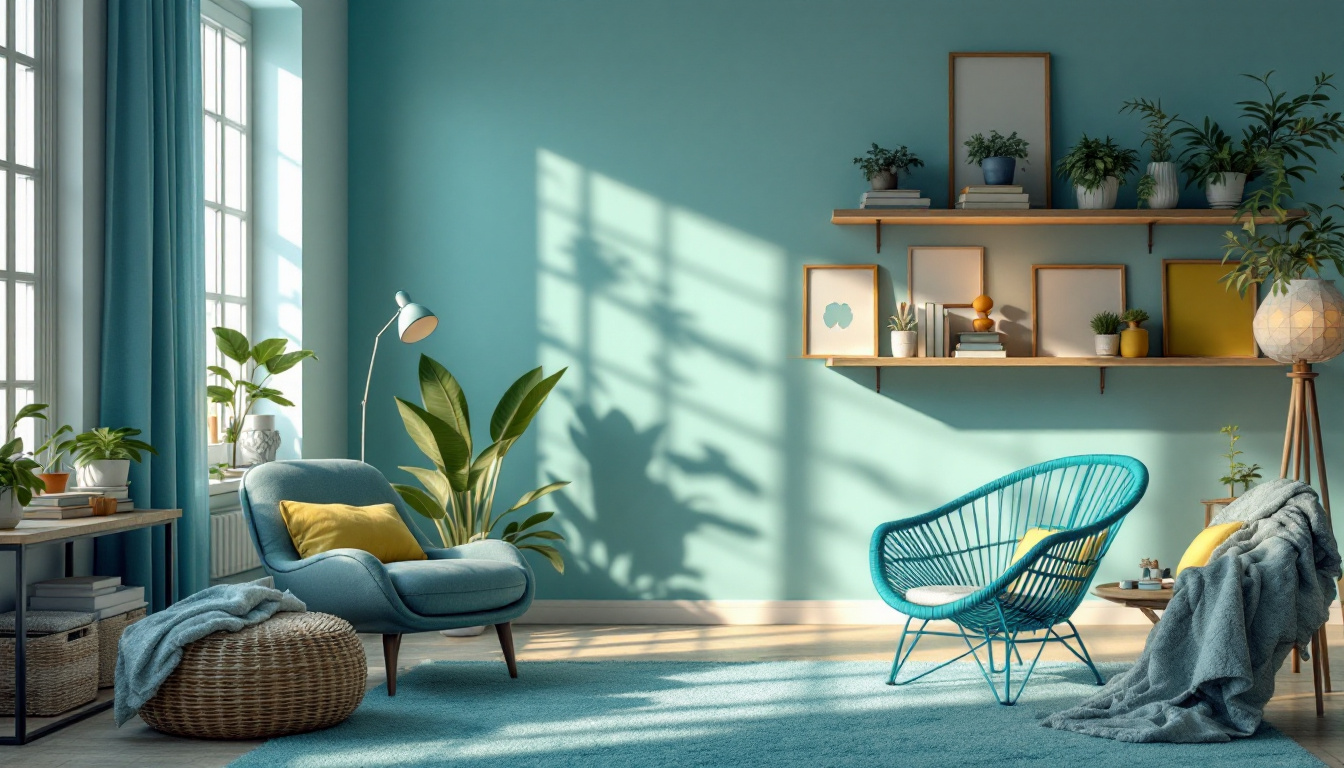3 Types of Visual Timer

The Power of Visual Timers
Visual timers are powerful tools that can greatly enhance focus and productivity. By providing a visual representation of time, these timers help individuals manage their time effectively, stay on track, and complete tasks efficiently.

Introduction to Visual Timers
Visual timers are devices or software applications that display the passage of time visually, usually through the use of color, shapes, or numbers. They offer a visual cue to indicate the remaining time for a specific activity, task, or event. These timers can be set for various durations, ranging from a few seconds to several hours, depending on the user's needs.
Visual timers are widely used in various settings, including classrooms, workplaces, and homes, to aid in time management, task focus, and overall productivity. They are particularly useful for individuals who struggle with time perception or who need extra assistance in maintaining focus and meeting deadlines.
Benefits of Using Visual Timers
Using visual timers can yield several benefits for individuals seeking to improve their focus and productivity. Some key advantages include:
- Enhanced Time Management: Visual timers provide a clear visual representation of time, making it easier for individuals to gauge the remaining time for a task. This helps in better planning and prioritizing activities, leading to improved time management skills.
- Improved Task Focus: The visual countdown provided by timers helps individuals stay on track and maintain focus on the task at hand. By creating a sense of urgency, visual timers can increase motivation and reduce distractions, enabling individuals to complete tasks more efficiently.
- Increased Productivity: Visual timers promote a sense of structure and urgency, encouraging individuals to work more efficiently and avoid procrastination. The visual representation of time passing acts as a constant reminder, promoting a productive mindset and aiding in achieving goals.
- Stress Reduction: By providing a clear visual indication of the remaining time, visual timers can help reduce stress and anxiety associated with time pressure. Seeing the progress made and knowing how much time is left can alleviate the feeling of being overwhelmed, resulting in a more relaxed and focused state of mind.
Incorporating visual timers into daily routines can have a significant impact on managing time effectively, staying focused, and increasing productivity. Whether used in educational settings, work environments, or for personal use, visual timers are versatile tools that can benefit individuals of all ages and backgrounds.

Types of Visual Timers
Visual timers come in different forms, each designed to serve specific purposes. Understanding the various types can help you choose the right visual timer for your needs. The three main types of visual timers are countdown timers, interval timers, and clock timers.

Countdown Timers
Countdown timers are widely used and offer a simple and effective way to manage time. These timers start at a specific duration and count down until reaching zero. They are particularly useful for tasks that require a specific time limit or for creating a sense of urgency.
Interval Timers
Interval timers are designed to alternate between set durations of work and rest periods. They are commonly used for interval training, HIIT workouts, or structured work routines that involve focused periods of activity followed by short breaks.
Clock Timers
Clock timers, also referred to as analog timers or time trackers, visually represent the passage of time using a clock-like display. These timers provide a continuous visual representation of the passing hours, minutes, and seconds. Clock timers are often used in situations where a clear understanding of elapsed time is needed.
By familiarizing yourself with these types of visual timers, you can choose the one that best suits your specific needs. Whether you require a countdown timer for time management, an interval timer for structured work or exercise routines, or a clock timer for visual representation of elapsed time, there is a visual timer available to enhance your focus and productivity.
Applications of Visual Timers
Visual timers are versatile tools that can be used in various applications to enhance productivity and time management. Here are three key areas where visual timers can be particularly beneficial: time management, task focus, and enhancing productivity.

Time Management
Visual timers are excellent tools for managing time effectively. By providing a visual representation of the passing time, they help individuals stay on track and meet deadlines. Whether it's for work, studying, or personal tasks, visual timers serve as a visual reminder to stay focused and complete tasks within a designated timeframe.
Using a visual timer allows individuals to allocate specific time intervals for different activities. This helps in prioritizing tasks and ensuring that each task receives the necessary attention. By breaking down larger tasks into smaller time segments, individuals can approach their work in a more organized and efficient manner.
Task Focus
Maintaining focus on a particular task can be challenging, especially when distractions are prevalent. Visual timers act as a visual cue, signaling individuals to concentrate solely on the task at hand. By setting a specific time limit for a task and visually seeing the countdown, individuals are motivated to stay engaged and avoid getting sidetracked.
Visual timers also promote the concept of time blocking, where individuals allocate dedicated periods of time for specific tasks. This technique helps in avoiding multitasking and allows individuals to fully immerse themselves in one task before moving on to the next. The visual representation of the timer reinforces the importance of staying focused and helps individuals resist the temptation of diverting their attention.

Enhancing Productivity
Visual timers have a positive impact on overall productivity. By setting clear time boundaries and providing a visual reference, individuals can better manage their workflow and accomplish tasks more efficiently. The visual element of the timer creates a sense of urgency, encouraging individuals to work with heightened focus and motivation.
Furthermore, visual timers can be used to implement the Pomodoro Technique, a time management method that breaks work into intervals with short breaks in between. This technique helps prevent burnout and enhances productivity by promoting a balance between focused work and rest.
By incorporating visual timers into their workflow, individuals can optimize their time, maintain task focus, and ultimately increase their overall productivity.
Visual timers offer a range of benefits when it comes to time management, task focus, and productivity enhancement. By leveraging these tools effectively, individuals can better allocate their time, stay focused on tasks, and achieve their goals in a more efficient and effective manner.
Setting Up Visual Timers
Visual timers are an effective tool for managing time, enhancing focus, and increasing productivity. To make the most of visual timers, it's important to understand how to use them effectively and customize their settings to suit your needs.

How to Use Visual Timers Effectively
To effectively use visual timers, consider the following tips:
- Set Clear Goals: Before starting a task, establish clear goals and determine how long you want to dedicate to it. This will help you set an appropriate timer duration.
- Choose the Right Timer: Select a visual timer that suits your preferences and needs. Whether it's a digital timer on your device or a physical timer, ensure that the display is clear and easy to read.
- Place the Timer in View: Position the timer where it is easily visible. This can be on your desk, next to your computer, or any other location that allows you to monitor the time remaining without causing distractions.
- Focus on the Task: Once the timer starts, concentrate solely on the task at hand. Avoid getting sidetracked by other activities or distractions.
- Take Breaks: If you're using a timer for work or study sessions, consider incorporating short breaks to maintain focus and prevent burnout. Breaks can help rejuvenate your mind and improve overall productivity.
- Evaluate and Adjust: After using visual timers for a while, evaluate their effectiveness for your specific needs. If necessary, make adjustments such as increasing or decreasing the timer duration to optimize your workflow.

Customizing Timer Settings
Visual timers often come with customizable settings that allow you to tailor them to your preferences. While the specific customization options may vary depending on the timer you're using, here are some common settings to consider:
- Timer Duration: Adjust the length of the timer to match the task or activity you're engaging in. Longer durations may be suitable for deep work sessions, while shorter durations can be beneficial for quick tasks or intervals.
- Alerts and Notifications: Customize the alerts and notifications to suit your preferences. Some timers offer various sounds, visual cues, or even vibration options to notify you when the time is up.
- Display Options: Explore different display options such as font size, color schemes, or background themes. Opt for a display that is visually appealing and easy for you to read at a glance.
- Interval Settings: If you're using an interval timer, customize the intervals and rest periods based on your needs. This can be particularly useful for activities that require alternating periods of work and rest.
- Personalization: Some visual timers allow for personalization by adding labels, notes, or even images. Utilize these features to create a more personalized and engaging timer experience.
Remember, the ultimate goal of customizing visual timer settings is to create an environment that enhances your focus, productivity, and time management skills. Experiment with different settings and find what works best for you.
By following effective usage techniques and customizing the settings to align with your specific requirements, visual timers can become a valuable asset in your daily routine, helping you stay on track, complete tasks efficiently, and make the most of your time.
Visual Timers in Different Settings
Visual timers can be incredibly useful in various settings to improve focus, manage time effectively, and enhance productivity. Let's explore how visual timers can be utilized in different environments such as the work environment, educational settings, and home and personal use.

Work Environment
In the workplace, visual timers can help individuals stay on track, manage time efficiently, and meet deadlines. Whether you're working on a project, attending meetings, or simply trying to allocate time for different tasks, visual timers can be a valuable tool.
By setting a visual timer, you can break your work into manageable chunks and allocate specific time slots to each task. This promotes better time management and ensures that you stay focused on your priorities. Visual timers are particularly helpful in reducing distractions and maintaining a productive workflow.
Educational Settings
In educational settings, visual timers are widely used to enhance students' time management skills and keep them engaged. Teachers can utilize visual timers during classroom activities, exams, or group discussions. By visually representing the time remaining, students are better able to manage their tasks and stay focused.
Visual timers can also be beneficial for children with attention difficulties or special needs. The visual representation of time helps them understand the passage of time and aids in transitioning between activities. By incorporating visual timers into educational settings, students can develop better time management skills and improve their overall productivity.

Home and Personal Use
Visual timers are not limited to professional or educational environments; they can also be invaluable at home for personal use. Whether it's for cooking, exercising, or managing daily routines, visual timers help individuals stay organized and maintain a sense of structure.
In the kitchen, visual timers can be used to track cooking and baking times, ensuring that your meals are prepared to perfection. During workouts, visual timers can help you adhere to specific exercise durations, rest periods, or interval training. By visually representing time, you can stay motivated and push yourself to achieve your fitness goals.
Visual timers can also be useful for managing daily routines, such as time spent on hobbies, relaxation, or household chores. By setting specific time limits for these activities, you can strike a balance between productivity and leisure time.
By incorporating visual timers into different settings, individuals can experience the benefits of improved time management, enhanced focus, and increased productivity. Whether it's the workplace, educational settings, or home and personal use, visual timers provide a valuable tool to optimize time utilization and achieve desired outcomes.

Additional Tips and Considerations
As you integrate visual timers into your daily routine, there are a few additional tips and considerations to keep in mind. These will help you maximize the effectiveness of visual timers and enhance your focus and productivity.
Incorporating Visual Timers into Daily Routine
Incorporating visual timers into your daily routine can be a game-changer for managing your time and staying on track. Here are some tips to help you seamlessly integrate visual timers into your routine:
- Identify your priorities: Determine the tasks or activities that require your focus and set specific time blocks for them using visual timers.
- Set realistic time intervals: Be realistic when setting the duration for your tasks. Consider the complexity and urgency of the task to ensure you allocate an appropriate amount of time.
- Experiment with different intervals: Test different time intervals to find what works best for you. Some people may thrive in shorter bursts of focused work, while others prefer longer periods with breaks in between.
- Create a visual timer routine: Establish a consistent routine by incorporating visual timers into your daily schedule. This helps train your brain to associate certain time intervals with specific tasks, improving your time management skills over time.
Combining Visual Timers with Other Productivity Tools
Visual timers can be even more effective when used in conjunction with other productivity tools. Here are some ways to combine visual timers with other tools to enhance your productivity:
Troubleshooting Common Issues with Visual Timers
While visual timers are generally reliable tools, you may encounter some common issues. Here are a few troubleshooting tips to help you overcome potential challenges:
- Distractions: If you find yourself getting distracted despite using visual timers, consider adjusting your environment. Minimize interruptions, put away your phone, and create a dedicated workspace to optimize your focus.
- Overwhelm or Fatigue: If you experience mental fatigue or feel overwhelmed due to extended periods of work, consider incorporating regular breaks into your routine. Use visual timers to schedule short breaks to rest and recharge.
- Time Estimation: If you consistently underestimate or overestimate the time needed for tasks, use visual timers in conjunction with time tracking apps or record your actual time spent on each task. This will help you refine your time estimation skills over time.
By incorporating visual timers into your daily routine, combining them with other productivity tools, and troubleshooting any potential issues, you can harness the full potential of visual timers to boost your focus and productivity.
Sources
https://www.timetimer.com/autism
https://www.autismparentingmagazine.com/visual-timer-benefits
More Resources
Expert Clinicians
Get started today ->


.jpg)
.jpg)

.jpg)
.jpg)




















































































































































































































































































































































































































































.jpg)
.jpg)
.jpg)
.jpg)
.jpg)
.jpg)
.jpg)
.jpg)
.jpg)
.jpg)
.jpg)
.jpg)
.jpg)
.jpg)
.jpg)
.jpg)
.jpg)
.jpg)
.jpg)
.jpg)
.jpg)
.jpg)
.jpg)
.jpg)

.jpg)
.jpg)
.jpg)
.jpg)
.jpg)
.jpg)
.jpg)
.jpg)
.jpg)
.jpg)
.jpg)
.jpg)
.jpg)
.jpg)
.jpg)
.jpg)
.jpg)
.jpg)
.jpg)
.jpg)
.jpg)
.jpg)
.jpg)
.jpg)





































































































































































































.jpg)


































































.jpg)
.jpg)
.jpg)
.jpg)
.jpg)
.jpg)
.jpg)
.jpg)
.jpg)
.jpg)
.jpg)
.jpg)
.jpg)
.jpg)
.jpg)
.jpg)
.jpg)
.jpg)
.jpg)
.jpg)
.jpg)
.jpg)
.jpg)
.jpg)
.jpg)
.jpg)
.jpg)
.jpg)
.jpg)
.jpg)
.jpg)
.jpg)
.jpg)
.jpg)


.jpg)
.jpg)
.jpg)
.jpg)
.jpg)
.jpg)
.jpg)
.jpg)
.jpg)
.jpg)
.jpg)
.jpg)
.jpg)
.jpg)
.jpg)
.jpg)
.jpg)
.jpg)
.jpg)
.jpg)
.jpg)
.jpg)
.jpg)
.jpg)
.jpg)
.jpg)
.jpg)


.jpg)
.jpg)
.jpg)
.jpg)
.jpg)
.jpg)
.jpg)
.jpg)
.jpg)
.jpg)
.jpg)
.jpg)
.jpg)
.jpg)
.jpg)
.jpg)
.jpg)
.jpg)
.jpg)

.jpg)

.jpg)


































































































.jpg)
.jpg)
.jpg)
.jpg)
.jpg)
.jpg)
.jpg)
.jpg)
.jpg)
.jpg)
.jpg)
.jpg)
.jpg)
.jpg)
.jpg)
.jpg)
.jpg)
.jpg)
.jpg)
.jpg)
.jpg)
.jpg)
.jpg)
.jpg)
.jpg)
.jpg)
.jpg)
.jpg)
.jpg)
.jpg)
.jpg)
.jpg)
.jpg)
.jpg)
.jpg)
.jpg)
.jpg)
.jpg)
.jpg)
.jpg)
.jpg)
.jpg)
.jpg)
.jpg)
.jpg)
.jpg)
.jpg)

.jpg)
.jpg)
.jpg)
.jpg)
.jpg)
.jpg)
.jpg)
.jpg)
.jpg)
.jpg)
.jpg)
.jpg)
.jpg)
.jpg)

.jpg)
.jpg)
.jpg)
.jpg)
.jpg)
.jpg)
.jpg)
.jpg)
.jpg)
.jpg)
.jpg)
.jpg)
.jpg)
.jpg)

.jpg)
.jpg)
.jpg)
.jpg)
.jpg)
.jpg)
.jpg)
.jpg)
.jpg)
.jpg)
.jpg)
.jpg)
.jpg)
.jpg)

.jpg)
.jpg)
.jpg)
.jpg)
.jpg)
.jpg)
.jpg)
.jpg)
.jpg)
.jpg)
.jpg)
.jpg)
.jpg)
.jpg)

.jpg)
.jpg)
.jpg)
.jpg)
.jpg)
.jpg)
.jpg)
.jpg)
.jpg)
.jpg)
.jpg)
.jpg)
.jpg)
.jpg)

.jpg)
.jpg)
.jpg)
.jpg)
.jpg)
.jpg)
.jpg)
.jpg)
.jpg)
.jpg)
.jpg)
.jpg)
.jpg)
.jpg)
.jpg)
.jpg)
.jpg)
.jpg)
.jpg)
.jpg)
.jpg)
.jpg)
.jpg)
.jpg)
.jpg)
.jpg)
.jpg)
.jpg)
.jpg)
.jpg)
.jpg)
.jpg)
.jpg)
.jpg)
.jpg)
.jpg)
.jpg)
.jpg)
.jpg)
.jpg)
.jpg)
.jpg)
.jpg)
.jpg)
.jpg)
.jpg)
.jpg)
.jpg)

.jpg)
.jpg)
.jpg)
.jpg)
.jpg)
.jpg)
.jpg)
.jpg)
.jpg)
.jpg)
.jpg)
.jpg)
.jpg)
.jpg)
.jpg)
.jpg)
.jpg)
.jpg)
.jpg)
.jpg)
.jpg)
.jpg)
.jpg)
.jpg)

.jpg)
.jpg)
.jpg)
.jpg)
.jpg)
.jpg)
.jpg)
.jpg)
.jpg)
.jpg)
.jpg)
.jpg)
.jpg)
.jpg)
.jpg)
.jpg)
.jpg)
.jpg)
.jpg)
.jpg)
.jpg)
.jpg)
.jpg)

.jpg)
.jpg)
.jpg)
.jpg)
.jpg)
.jpg)
.jpg)
.jpg)
.jpg)
.jpg)
.jpg)
.jpg)
.jpg)
.jpg)
.jpg)
.jpg)
.jpg)
.jpg)
.jpg)
.jpg)
.jpg)
.jpg)
.jpg)

.jpg)
.jpg)
.jpg)
.jpg)
.jpg)
.jpg)
.jpg)
.jpg)
.jpg)
.jpg)
.jpg)
.jpg)
.jpg)
.jpg)
.jpg)
.jpg)
.jpg)
.jpg)
.jpg)
.jpg)
.jpg)
.jpg)
.jpg)
.jpg)
.jpg)
.jpg)
.jpg)
.jpg)
.jpg)
.jpg)
.jpg)
.jpg)
.jpg)
.jpg)
.jpg)
.jpg)
.jpg)
.jpg)
.jpg)
.jpg)
.jpg)
.jpg)
.jpg)
.jpg)
.jpg)
.jpg)
.jpg)

.jpg)
.jpg)
.jpg)
.jpg)
.jpg)
.jpg)
.jpg)
.jpg)
.jpg)
.jpg)
.jpg)
.jpg)
.jpg)
.jpg)
.jpg)
.jpg)
.jpg)
.jpg)
.jpg)
.jpg)
.jpg)
.jpg)
.jpg)
.jpg)

.jpg)
.jpg)
.jpg)
.jpg)
.jpg)
.jpg)
.jpg)
.jpg)
.jpg)
.jpg)
.jpg)
.jpg)
.jpg)
.jpg)
.jpg)
.jpg)
.jpg)
.jpg)
.jpg)
.jpg)
.jpg)
.jpg)
.jpg)
.jpg)
.jpg)

.jpg)
.jpg)
.jpg)
.jpg)
.jpg)
.jpg)
.jpg)
.jpg)
.jpg)
.jpg)
.jpg)
.jpg)
.jpg)
.jpg)
.jpg)
.jpg)
.jpg)
.jpg)
.jpg)
.jpg)
.jpg)
.jpg)
.jpg)
.jpg)
.jpg)
.jpg)
.jpg)
.jpg)
.jpg)
.jpg)
.jpg)
.jpg)
.jpg)
.jpg)
.jpg)
.jpg)
.jpg)
.jpg)
.jpg)
.jpg)
.jpg)
.jpg)
.jpg)
.jpg)
.jpg)
.jpg)
.jpg)

.jpg)
.jpg)
.jpg)
.jpg)
.jpg)
.jpg)

.jpg)
.jpg)
.jpg)
.jpg)
.jpg)
.jpg)
.jpg)
.jpg)
.jpg)
.jpg)
.jpg)
.jpg)
.jpg)
.jpg)
.jpg)
.jpg)

.jpg)
.jpg)
.jpg)
.jpg)
.jpg)
.jpg)
.jpg)
.jpg)
.jpg)
.jpg)
.jpg)
.jpg)
.jpg)
.jpg)
.jpg)
.jpg)
.jpg)
.jpg)
.jpg)
.jpg)
.jpg)
.jpg)
.jpg)

.jpg)
.jpg)
.jpg)
.jpg)
.jpg)
.jpg)
.jpg)
.jpg)
.jpg)
.jpg)
.jpg)
.jpg)
.jpg)
.jpg)
.jpg)
.jpg)
.jpg)
.jpg)
.jpg)
.jpg)
.jpg)

.jpg)
.jpg)
.jpg)
.jpg)
.jpg)
.jpg)
.jpg)
.jpg)
.jpg)
.jpg)
.jpg)
.jpg)
.jpg)
.jpg)
.jpg)
.jpg)
.jpg)
.jpg)
.jpg)
.jpg)
.jpg)
.jpg)
.jpg)
.jpg)
.jpg)
.jpg)
.jpg)

.jpg)
.jpg)
.jpg)
.jpg)
.jpg)
.jpg)
.jpg)
.jpg)
.jpg)
.jpg)
.jpg)
.jpg)
.jpg)
.jpg)
.jpg)
.jpg)
.jpg)
.jpg)
.jpg)
.jpg)
.jpg)
.jpg)
.jpg)
.jpg)
.jpg)
.jpg)
.jpg)
.jpg)
.jpg)
.jpg)
.jpg)

.jpg)
.jpg)
.jpg)
.jpg)
.jpg)
.jpg)
.jpg)
.jpg)
.jpg)
.jpg)
.jpg)
.jpg)
.jpg)
.jpg)
.jpg)
.jpg)
.jpg)
.jpg)
.jpg)
.jpg)
.jpg)
.jpg)
.jpg)
.jpg)
.jpg)
.jpg)
.jpg)
.jpg)
.jpg)
.jpg)
.jpg)
.jpg)
.jpg)
.jpg)
.jpg)
.jpg)
.jpg)
.jpg)
.jpg)
.jpg)
.jpg)
.jpg)
.jpg)
.jpg)
.jpg)
.jpg)
.jpg)
.jpg)
.jpg)
.jpg)
.jpg)
.jpg)
.jpg)
.jpg)
.jpg)
.jpg)
.jpg)
.jpg)
.jpg)
.jpg)
.jpg)
.jpg)
.jpg)
.jpg)
.jpg)
.jpg)

.png)
.png)
.png)
.png)
.png)
.png)
.png)
.png)
.png)

.jpg)
.jpg)
.jpg)
.jpg)
.jpg)
.jpg)
.jpg)
.jpg)
.jpg)
.jpg)
.jpg)
.jpg)

.jpg)
.jpg)
.jpg)
.jpg)
.jpg)
.jpg)
.jpg)
.jpg)
.jpg)
.jpg)
.jpg)
.jpg)
.jpg)
.jpg)
.jpg)
.jpg)
.jpg)
.jpg)
.jpg)
.jpg)
.jpg)

.png)
.png)
.png)
.png)
.png)
.png)
.png)
.png)
.png)
.png)
.png)
.png)
.png)
.png)
.png)
.png)
.png)
.png)
.png)
.png)
.png)
.png)

.png)


.jpg)
.jpg)
.jpg)
.jpg)
.jpg)
.jpg)
.jpg)
.jpg)
.jpg)

.jpg)
.jpg)
.jpg)
.jpg)
.jpg)
.jpg)
.jpg)
.jpg)
.jpg)
.jpg)
.jpg)
.jpg)
.jpg)
.jpg)
.jpg)
.jpg)
.jpg)
.jpg)
.jpg)
.jpg)
.jpg)
.jpg)
.jpg)



























.jpg)
.jpg)

.jpg)
.jpg)
.jpg)
.jpg)
.jpg)
.jpg)
.jpg)
.jpg)
.jpg)
.jpg)
.jpg)
.jpg)
.jpg)
.jpg)
.jpg)
.jpg)
.jpg)
.jpg)
.jpg)
.jpg)
.jpg)

.jpg)
.jpg)
.jpg)
.jpg)
.jpg)
.jpg)
.jpg)
.jpg)
.jpg)
.jpg)
.jpg)
.jpg)
.jpg)
.jpg)
.jpg)
.jpg)
.jpg)
.jpg)
.jpg)
.jpg)
.jpg)
.jpg)
.jpg)

.jpg)
.jpg)
.jpg)
.jpg)
.jpg)
.jpg)
.jpg)
.jpg)
.jpg)
.jpg)
.jpg)
.jpg)
.jpg)
.jpg)
.jpg)
.jpg)
.jpg)
.jpg)

.jpg)
.jpg)
.jpg)
.jpg)

